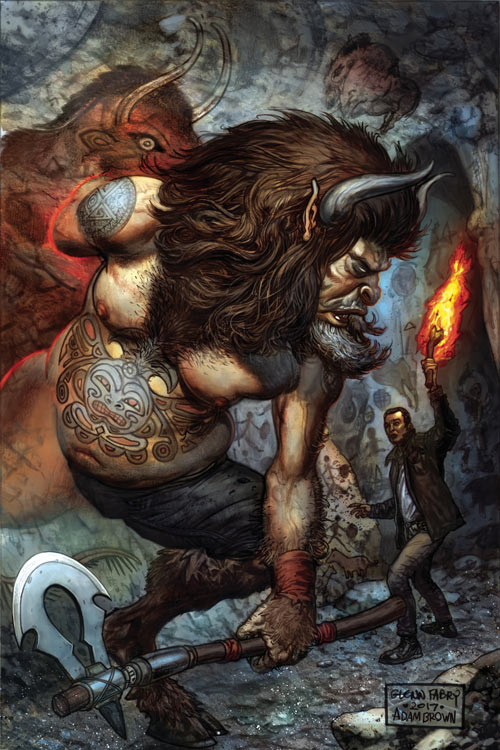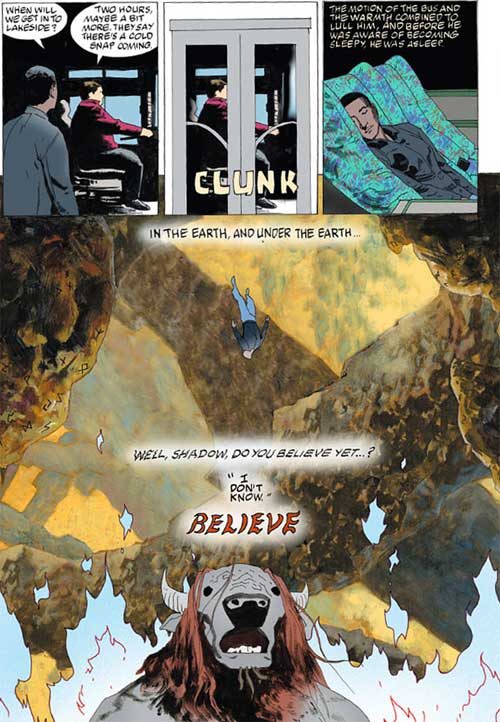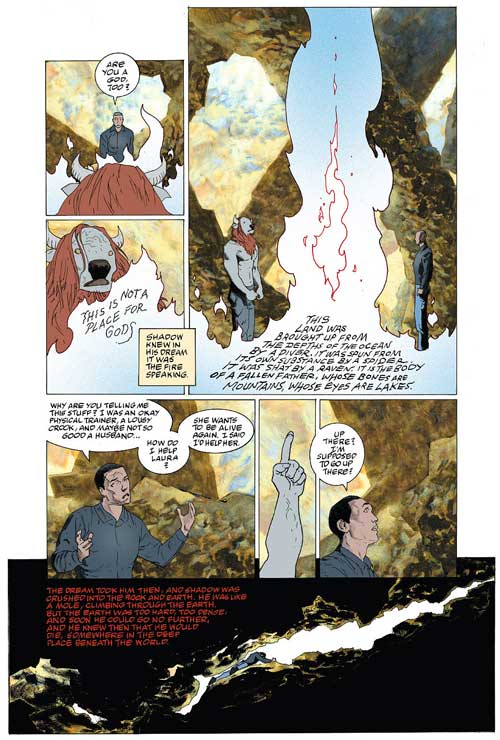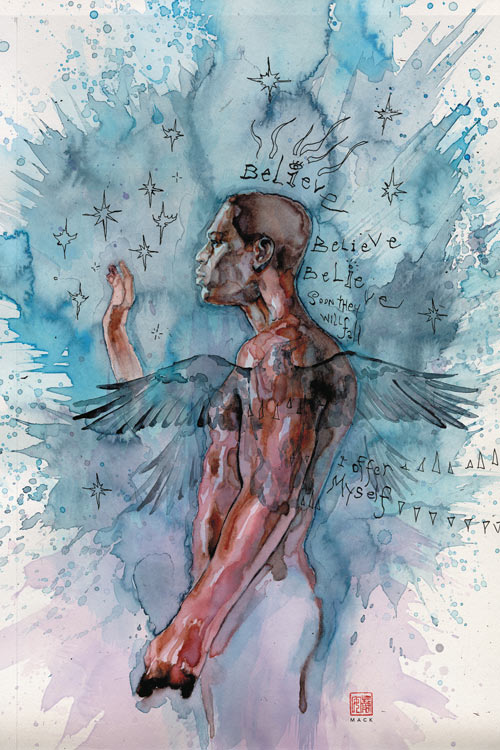Hammering The Gods American-Style
Feb 02, 2018
 |
by Vince Brusio
Those who walk above us are not that much different. They, too, can become irrelevant. Have insecurities. Stumble. Flinch. Hesitate. Those human qualities are put upon deities in American Gods: My Ainsel #1 (JAN180097) from Dark Horse Comics, and in this PREVIEWSworld Exclusive interview with writer P. Craig Russell, we get to see the mental notes scrawled on napkins that help make this adaptation poignant, personal, and powerful.
American Gods: My Ainsel #1 (JAN180097) is in comic shops March 14.
**********
Vince Brusio: For those new to the series, can you give us a quick summary of American Gods? What should readers know about the series prior to coming on board fresh for the second arc of American Gods: My Ainsel #1 (JAN180097)?
P. Craig Russell: American Gods is the story of the collision between the gods of the old world and those of the new. The old gods are those that the immigrants from all over the globe brought with them, by virtue of their religious and folkloric beliefs, to America. Some were brought hundreds of years ago, and in one of the stories, over 14,000 years ago. Once here, their believers lose faith over the generations and in the first volume of American Gods, just completed, we find the old gods fallen on hard times. In addition to their struggle to survive, feeding on shreds of belief, they find themselves under attack from the new gods, gods of celebrity, gods of the iPhone, and the Internet.
Vince Brusio: In this new series, the main characters are going on a road trip to meet new gods and prepare for war. What is the relationship like between Shadow and Wednesday?
P. Craig Russell: The relationship between Shadow and Wednesday is, superficially, one of employer and employee. Shadow runs errands and provides protection for the elder god. It is a sometimes contentious relationship and as the story progresses becomes increasingly complex as Shadow begins to realize the part he is being forced to play reveals himself to be something or someone more than he imagined.
Vince Brusio: Although this is an adaptation of Neil Gaiman’s award-winning novel, will anything unfold in this series arc that may not have been in the original text? On the flip side, are there any scenes or details from the original story that were left out of this adaptation?
P. Craig Russell: In any adaptation, there will always be necessity and personal sensibility pictures on the page that are not in the text. This happens when the author is talking about, for example, the nature of society or a character’s internal thoughts, when there is no dialogue between characters or any sequence of actions to stage. That’s when you have to find images that reflect the author’s ideas. For example from the first issue: Shadow, just released from prison, is on a bus to the airport. It occurs to him he hasn’t cried about his wife’s death, has in effect ‘felt nothing at all’. To visualize this I staged the bus at a stoplight and juxtaposed the narration with a slow pull-in to the stoplight until it fills the frame so the words ’no tears’ ’no sorrow’ ’nothing’ bring the viewer into the panel-filling pure red of the stoplight on the word ’nothing’. His life is at a crossroads and a standstill. The red of the stoplight is used as a visual prop/metaphor to illustrate prose that has no ‘picture' in it.
On that flip side, there are a great many details trimmed out. It’s a 598 page graphic novel adaptation, and while that seems like a lot of room to play with, it’s an adaptation of a novel that’s over 500 pages long and Neil can pack a tremendous number of events into a single paragraph, particularly in the “Coming to America” sections. The easiest trimming is of prose that describes a setting. The picture does that for us, so that’s easy to cut. I’m always aware of what we might be losing, and so my first script draft can be top heavy. It’s only when I’ve rough lettered it onto the page that I can see if it works on it’s own, away from the source material. And while a direct narrative line needs to be maintained I also try to include as much of the somewhat sideways humor Neil imbues the story with. It’s one of the things that gives American Gods its unique flavor.
Vince Brusio: What’s the teamwork like between what you do and the artwork of Scott Hampton? How do you two complement each other?
P. Craig Russell: I always say my layouts are for artists who already know how to draw. My job is to write a script and design the storytelling/page/lettering design. At it’s simplest, if the setting is a motel or restaurant exterior I’m just indicating with a few lines 'restaurant goes here'. Other times I indicate body language and all the visual sort of directions that come with storyboarding a film. I’m the liaison between novel and artist. Scott is the artist. Sometimes, he follows my suggestions very closely and other times has a different take on the panel. As an artist myself, I can respect the need not to feel micromanaged, and I can count on the fingers of one hand the suggestions or requests I’ve made to Scott for alterations to the finished artwork over the course of about 250 pages now. That’s getting close to 2,000 drawings.
Vince Brusio: What would you say makes this project exciting for you?
P. Craig Russell: I love the problem-solving challenge of finding a visual structure to pure prose. It’s like a giant puzzle that you disassemble and reassemble as something that resembles what it was but is something completely new at the same time. I’m just now at the point of wrapping up the second volume and while that sort of architectural ‘blueprinting’ of a graphic story has always been my favorite part of the process I’ll be happy to get back to doing finished art myself when I finish American Gods, and resume work on Neil’s short story The Problem of Susan.
 |
 |
 |
**********
Vince Brusio writes about comics, and writes comics. He is the long-serving Editor of PREVIEWSworld.com, the creator of PUSSYCATS, and encourages everyone to keep the faith...and keep reading comics.




